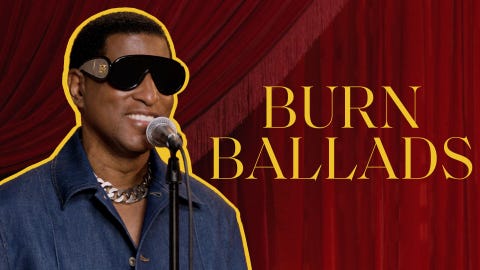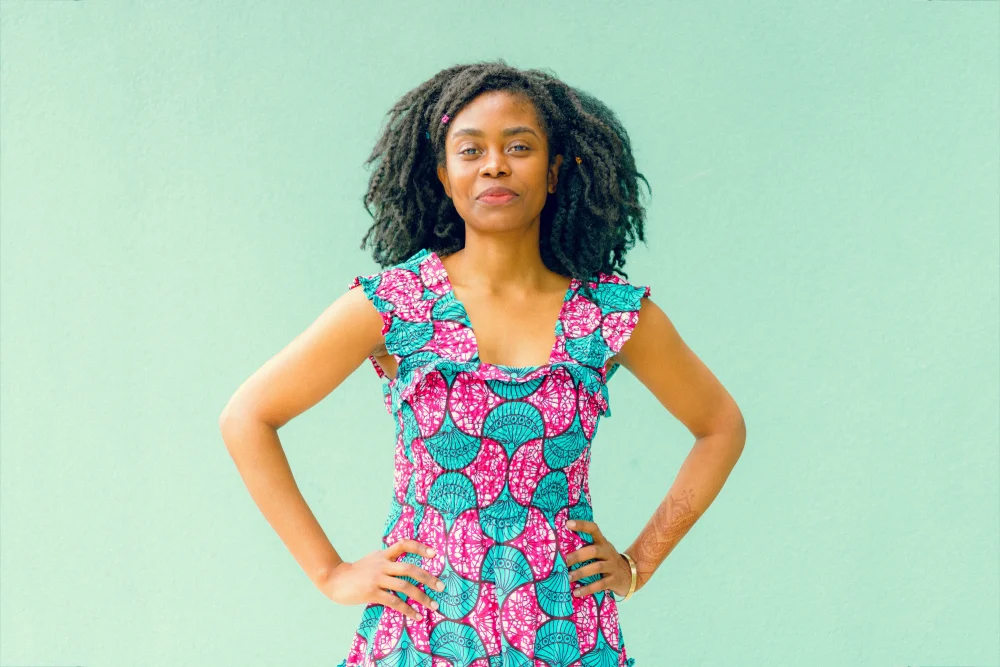another black girl Rejecting this year’s playful attempt at pink rebranding: Hulu series Barbiecore isn’t just a fun symbol of female empowerment. That’s a warning.Adapted from the show Zakiya Dalila Harris books All 10 episodes of Season 1 are currently available for streaming. The film follows Nella (Sinclair Daniel), a young editorial assistant and the only black woman at major publishing company Wagner Books. Or at least that is until Hazel (Ashley Murray) comes along. When the two meet for the first time in the series premiere, their differences are immediately apparent. Although Nella wears a simple ribbed polo shirt and khaki slacks, she adheres to an implicit and strict corporate dress code. Meanwhile, Hazel stepped out wearing scarlet track pants, a loose oversized button-down, and a leopard-print cardigan, created in collaboration with Karlana Barfield Brown and Target Future Collective.
By the time Nella and Hazel become friends inside and outside of Wagner, the former tends to imitate the latter. She traded in her worn cream sweater for a lilac turtleneck and maroon striped blazer. Purples, reds and pinks permeate her costumes like parasites, a choice costume designer Cairo Coates says was entirely intentional. “Anything pink symbolizes that they drank the Kool-Aid and that something is wrong,” she says.
Ms. Coates, who spent part of her early career working at a New York magazine company, modeled Wagner Books’ clothing, particularly Nella’s, after her own observations from the front lines of whitewashed corporate culture. Therefore, dressing Nella in a basic costume for the premiere episode was an easy task. “For Nella, [her style] It was really simple and a little monochromatic,” she says. “She’s like the wallpaper in the office. We didn’t want her to stand out too much because she already stands out. She’s the only black woman in the whole office.”
Other works by Elle

So when “another black girl” starts showing up to work wearing primary hues, eye-catching silhouettes, and bold designs by black creators, Nella admires, is jealous, and is confused all at the same time. I find myself doing this. “For Hazel, [her closet] It was very eclectic and spontaneous, and Hazel incorporated a lot of street style, which was not something we were used to in a business setting,” says Coates. “And in many cases, what she wore was a little bit awkward for most people in the room.” [in the office]. …and that’s why we wanted to push the envelope. ”
To dress Hazel and the other characters outside the sanitized Wagner office, Ms. Cote sourced from thrift stores and her own wardrobe, as well as from Andrea Iyama, House of Sunny, Brandon Blackwood, and others. It has pulled out designer brands such as Sergio Hudson, Hanifa, Telfar, Pyer Moss and Sewitt. Cium and Bridge Parker. For Nella, on the other hand, Coates stuck to what she calls “mundane stores in malls where you can find basic items.” Examples include Banana Republic, Madewell, and Gap. However, as the episode progresses, the court begins to distort this dualism, and Hazel’s unusual influence on the office (literal and perhaps supernatural) manifests itself in the employees’ attire.
“Hazel’s environment brings her personality to life, and that personality touches everyone,” Coates says. “So as you get closer to the end, you start to see some of your co-workers wearing patterned clothes. And you start to see that they’re wearing more color.” Perhaps among these co-workers , perhaps no one is more susceptible to Hazel’s neon signals than Nella herself. Nella’s subconscious reasoning seems to be her threefold. 1) She is in desperate need of her colleague who will make her feel less alone. 2) The tingle of competition between her and Hazel becomes more threatening than friendly. 3) As Court says, Nella is “insecure about herself. And we wanted to make sure her character looked like that. She’s always changing. She’s not sure of herself.” I don’t really have that style, so I’m trying to find my own.”
That’s where the alarming shade of pink comes in. In Episode 6, Hazel appears wearing a custom-made pink mudcloth kimono designed by Coates herself and her seamstress Shan Keith. At this point, the audience realizes that Hazel is not what she seems. In other words, pink is “a warning sign for the whole show,” Coates said. And the producers and directors were like, “You know what?” This would be great if all women always wore pink. ‘t right About Hazel. Who is she pretending to be? And who is she really? This fear of unreality, combined with the very real fear of working as a black woman in a blindingly white environment, makes these girlboss pinks run through the wardrobes of Nella and those around her. Typical in color. A nightmare dressed as Barbie.
By the end of the series, Coates says, these bright colors are meant to be a call to the audience. The idea is to question who “plays the role” and when and how it will be accepted, especially in a tense environment like a movie. another black girl. “Fashion is not evil and we love it,” Coates said. “Rather, it’s that people who are fashionable and ‘well put together’ should be scrutinized a little more.” Everyone who appears in a show wearing some kind of fashion is someone we need to pay more attention to, rather than the positive attention we usually give to people who are “acting.” did. They are the people we need to ask questions about. ”
culture writer
Lauren Paquette Pope is ELLE’s staff culture writer, focusing on film, television, and books. She previously served as an associate editor at ELLE.










